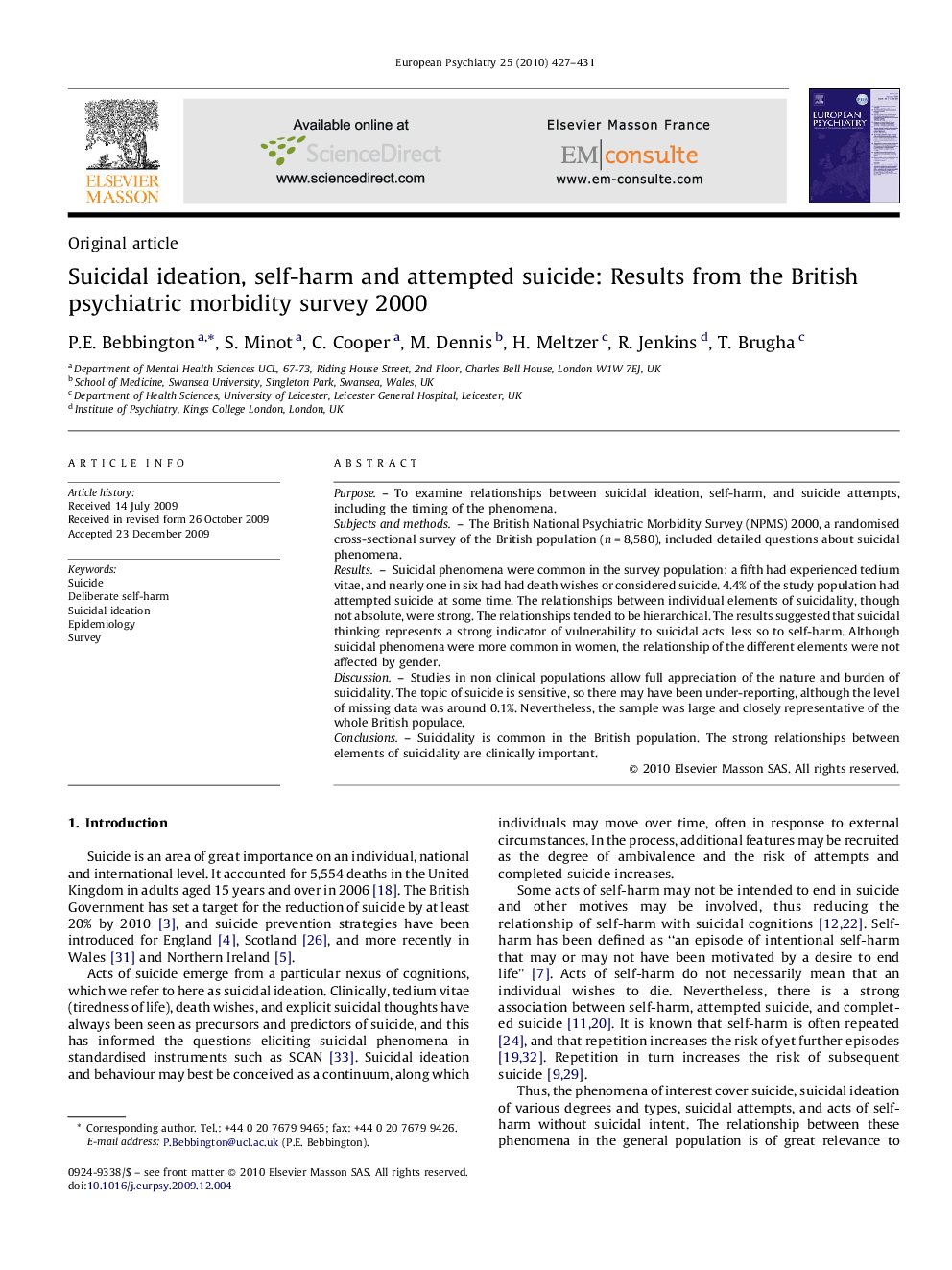| Article ID | Journal | Published Year | Pages | File Type |
|---|---|---|---|---|
| 4184917 | European Psychiatry | 2010 | 5 Pages |
PurposeTo examine relationships between suicidal ideation, self-harm, and suicide attempts, including the timing of the phenomena.Subjects and methodsThe British National Psychiatric Morbidity Survey (NPMS) 2000, a randomised cross-sectional survey of the British population (n = 8,580), included detailed questions about suicidal phenomena.ResultsSuicidal phenomena were common in the survey population: a fifth had experienced tedium vitae, and nearly one in six had had death wishes or considered suicide. 4.4% of the study population had attempted suicide at some time. The relationships between individual elements of suicidality, though not absolute, were strong. The relationships tended to be hierarchical. The results suggested that suicidal thinking represents a strong indicator of vulnerability to suicidal acts, less so to self-harm. Although suicidal phenomena were more common in women, the relationship of the different elements were not affected by gender.DiscussionStudies in non clinical populations allow full appreciation of the nature and burden of suicidality. The topic of suicide is sensitive, so there may have been under-reporting, although the level of missing data was around 0.1%. Nevertheless, the sample was large and closely representative of the whole British populace.ConclusionsSuicidality is common in the British population. The strong relationships between elements of suicidality are clinically important.
